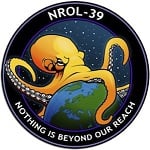I’m sorry but it doesn’t make sense TO ME. Based on what I was taught, regardless of the month, I think what matters first is to know what day of the month you are in, if at the beginning, in the middle or at the end of said month. After you know that, you can find out the month to know where you are in the year.
What is the benefit of doing it the other way around?
EDIT: To avoid misunderstandings:
- I am NOT making fun OF ANYONE.
- I am NOT negatively judging ANYTHING.
- I am totally open to being corrected and LEARN.
- This post is out of pure and honest CURIOSITY.
So PLEASE, don’t take it the wrong way.
Historically, I don’t know, but personally, I prefer YYYY-MM-DD style dates since they sort naturally in basically all computer software without having to think about it.
ISO 8601 rules!
RFC 3339 is where it’s at
Free sorting is always the way to go.
Anyone who doesn’t use ISO 8601 is wrong.
FACTS
No. RFC 2822 (short format) is also great. “20 Mar 2025”
Until you try to sort your log files alphabetically.
This is for display, not data processing.
Also guess what, journalctl formats date like “May 21 00:48:56” (probably according to system locale). Why would you sort your log files alphabetically? They should already be in chronological order.
no letters! Go away letters!
Wrong
this is terrible
There are plenty of other scenarios with a similar pattern of starting at the larger scale and then the specific.
TV shows: Season 2 Episode 9
Theatre: Act one, scene 3
Biblical: Book of John 3:16
Other books: Chapter 9, page 125.
Address: 123 Main St, Apt #2
Phone numbers: country code (area code) locality-individual
I’m not saying either is right or wrong, but there are precedents for either way.
Perhaps the most relevant of all: time of day. 9:30. Hours first, then minutes. I’m not from a location that does month-day ordering, but I think largest to smallest works excellently for time measurement, hence ISO 8601.
I’m surprised I didn’t even think of that. It’s so obvious!
9:30
Which I would say as “Half past nine”.
9:30 and 21:30, please
2-123 Main St, City, Province, Country

I’m guessing, but it’s likely because the spoken form for a date is normally, 'May 31st, 2025" vs “The 31st of May, 2025”, hence 05/31/25 v 31/05/25.
I once did some research on this exact topic, and my findings pretty much mirror your guess.
Not for me, e.g. “remember, remember the fifth of November” is how we remember the date of Guy Fawkes Night in the UK. “Fourth of July”, “14th of February”, “First of April”, etc.
I guess you mean in the States, but perhaps they say it that way because they write their dates M-D-Y.
So, by the time someone in the UK has finished saying the day and “of,” an American has said the month and day.
The US is finally more efficient!
Except other languages beat English.
Germans just say the numbers. For example, today is the 31st 5th. Who needs the month name anyways?
There go the Germans trying to beat everyone again.
That’s only useful for the current date, or dates within your current month. Otherwise this is worthless information haha.
“When was Archduke Franz Ferdinand assassinated?”
“The 28th.”
I’m a fan of ISO-8601 which is YYYY-MM-DD. When context is known, dropping the year on something is fine (i.e. if I post a schedule saying ‘summer 2025 schedule’, I don’t need to start every date on it with 2025). Japanese does this as well (and I think Chinese and Korean, but someone is welcome to correct me if I’m wrong there).
If the year and month are already known, just using the day is fine as well (a calendar doesn’t write the full date in every square). Having it in that order makes sense to me.
MM-DD-YYYY is right out, though, so I only agree with the 'muricans on the MM-DD part.
Canada’s government has this standard, YYYY-MM-DD, but even they are inconsistent.
The rest of Canada often follows America’s MM-DD-YYYY.
It’s the inconsistency that’s ridiculous.
Be the change you want to see. I use month names or ISO 8601 in anything written, have been for a year to the point where using month names is more accidental than anything else. If anyone asks, I mention it’s government standard. Hopefully, the ambiguous date forms die out faster than the Imperial system.
Same. Keeps my reports nice and organized.
Whoo. ISO-8601 fan club. Its so much easier for computers to sort dates in that format. I insist on using it for documents at work and Excel even handles it better with less formatting issues. I do wish they covered it in schools earlier, its neat, logical and works best when everyone is on the same page.
I’m sure the history is that, for most daily purposes, it was useful to know both. Knowing the larger element (the month) first sets the context for the smaller detail. For instance, saying I met someone for dinner on December 12 gives you the broader context (e.g. the season, possible relevant events) before the smaller detail of the day.
I think of it as, if you got shot halfway through telling me the date of something, “December” on its own is more useful information than “12”. Technically, “12” narrows it down to fewer possible dates, but it could be at any time of year, while December only happens once a year, in March or whatever.
That explains it, getting shot halfway through a sentence is far less likely outside America.
I does make more sense if you put it that way.
Every digital clock displays hours:minutes:seconds. Largest to smallest. I see no reason not to follow the same pattern with the date year/month/day.
This is also how my phone time stamps a photo - year/month/day/hours/minutes/seconds.
This seems very logical to me.
Everybody says this, but I keep seeing mm/dd/yyyy from north American sources, and dd/mm/yyyy from pretty much everywhere else.
Why are we stupid
In hungary we use yy/mm/dd
And AFAIK estonia, china, japan and mongolia too
deleted by creator
We read left to right.
Hour left makes sense as hour is very important to know, many times for important than the minutes.
With dates year is usually not that important to know, and day/month became much more important to know in a daily basis. So they get a preference.
For instance, a doctor gives you an appointment on 2025-07-25. The first thing you read is 2025, which os not very important as the day and month, as you could already assume the day. A date on 25-07-2025 gives you important information sooner.
I agree but my appointment is three months from now, so knowing that it isn’t this month is more important than knowing the day of the month first.
Is it honestly more common to have something in another month than the current one?
yes.
my last 5 dr appts have been at least 2 months out, sometimes up to 8 months.
I can live with getting that important information a half second later.
deleted by creator
Spoken language is already inefficient, which is why we use so many shortcuts in it. If I’m texting someone about an upcoming event, I might also just use the day of the month or the weekday (wings on Fri?). But if I’m writing an email, signing a document, or doing something else that might be referenced weeks, months, or years in the future, ISO 8601 is the way to go.
I personally prefer yyyy-mm-dd, as the Japanese do, which also puts month before day. I think it’s because they tend to prioritize history, so that makes sense. Year gives a historical context, month gives the season, while day is kind of arbitrary when talking about historical events. Day will matter most if I’m making short term plans, though, so I certainly see the appeal for day to day life.
Depending on what you’re doing, one will matter more. Precision matters more the more fine tuned the situation.
Think of it like hours vs minutes vs seconds. If I’m just thinking vaguely about the time of day, hour gives me most of the context. If I’m meeting someone or baking cookies, minutes matter a lot more but seconds is a bit too specific. If I’m defusing a bomb? Seconds matter.
You can also sort files named using this format alphabetically and they’ll still be chronologically correct.
That’s the ISO-8601 format, Japan uses “/” or alternatively yyyy年mm月dd日
Yeah I know it by the latter but didn’t try to type it out on this phone, lol
In normal conversation, it’s more common (at least here) to say “May 31st” than “the 31st of May.” I think the order of the numerical only dating system is just reflecting that.
Then why “fourth of July”?
Because English isn’t allowed to be consistent.
Probably specifically to stress that it is A Special Day and not just july fourth
I suspect that when the holiday was getting going, it was spread by music, and “July 4th” doesn’t carry the lyric … Utility of “fourth of July”
The phrase “Born on, the fourth of, July!” Is buried in my consciousness but I can’t name the song or any other lines to go with it.
Then again, you also write $5 but say it five dollars. The way something is said can be different from how it is written.
The French, at least in Canada, put the currency symbol after the number.
Sure, but the $ is signifying the following numbers refer to money. And people can write it differently than they say it. I will say “June 1st” much, much more often than “the 1st of June”, but I will also almost always write it “01 June <YEAR>”.
But the reason it is much more common in the USA to write dates as “June 1, <YEAR>” is because that is how it is often spoken here. That doesn’t need to be consistent across other speech and writing patterns, it’s just how it developed. Probably goes back to the printing press like a lot of the other oddities in writing here…
Because the month tells me more about how far in the future something is. If I have an appointment on the 12th of July, there’s not much information in knowing it’s on the 12th. 12th of what? But it’s in July, so between 1 and 2 months in the future. If I need more info, then I’ll pay attention to the day. So in order of information given.
Historical dates are similar, except I really just need (roughly) the year, and then a month if that’s relevant. Knowing the exact date of a historical event is just showing off. But if you know the month, you know what season it was, what the weather was probably like. Was it planting/growing/harvest time? You can guess at a lot of things with just the month.
Perhaps because where I live there are no seasons in the same way as in the United States, knowing the month doesn’t matter to us unless we work in the fields, here there are only months of sun and months of rain.
Yeah that makes sense then. I live in Minnesota and the seasons definitely matter here. Every 3 months will be a completely different drastic changes to temperature, weather, etc. So for planning, the month definitely matters and I think it makes more sense for us to say it first.
Not that it really matters that much haha.
Sure, but if I tell you the month, you still know what part of the year it is. If it’s sunny, or if it’s rainy must mean something to you.
Mmm not so much. I prefer to know on the first day so, for example, how close I am to payday, which is every two weeks. I don’t care that much about months other than December since I finished college.
deleted by creator
It’s more efficient to say June 1st. I suppose you could say 1st June though. Not sure if anyone does that.
Because fuck you, that’s why
It’s inherited from a historic convention from the UK. Historically the rationale was that the month was more important than the year, so they put it first, although this has no useful consistency or order to it.
Unfortunately, kind of dumb decisions from the past tend to stick and keep existing for an unnecessary long time because people get used to them and then never change them. Popularity or habit can beat reason, objectivity etc…
Typewriter-optimized means it’s intentionally made to slow down your typing because the old typewriters couldn’t deal with too fast typing.
I wish that myth would die. If that was the case then E and R would be furthER away from each othER because being right next to each othER would make it likely for the two lettERs to bump into each othER.
Contrary to popular belief, the QWERTY layout was not designed to slow the typist down, but rather to speed up typing. Indeed, there is evidence that, aside from the issue of jamming, placing often-used keys farther apart increases typing speed, because it encourages alternation between the hands.
Thanks, didn’t know. It’s indeed a well-established myth then. Corrected my post.
Interesting. Thanks! I genuinely believed that myth was true.
The QWERTY keyboard was designed to speed typing up, not slow it down
sauce?
some studies on keyboard layout have suggested that, for a skilled typist, layout is largely irrelevant – even randomized and alphabetical keyboards allow for similar typing speeds to QWERTY and Dvorak keyboards – and that switching costs always outweigh the benefits of further training with a keyboard layout a person has already learned
Here’s just one, and there are many. What you cited above doesn’t contradict what I said either…my point is it wasn’t created to intentionally slow typing down
that just says there’s no evidence for the apocryphal theory of it slowing typing down, not what you said about speeding it up. plus “slows it down” is a corruption of the original apocryphal idea that it speeds up typewriting by preventing jams due to neighboring keys being pressed
That’s an apocryphal explanation for QWERTY’s design. I personally doubt it since “a” and “s” are placed right next to each other. Additionally, placing keys further apart doesn’t mean they’re slower to type. (In fact, anecdotally, it can be the opposite. In piano, incorrect fingering disproportionately affects playing keys that are right next to each other.)
Damn you’re right. In many respects, habit overcomes reason.
That seems to suggest that the American style is a preservation of the older English format, much like we kept spelling of some words like the original English at colonization while the UK gradually changed with other influences around them.


























